AURORA, Colo. — Until early this year, Alberto, 11, had never stepped into a classroom.

The closest school was many miles from his village in Venezuela, and Alberto’s father never allowed him or his mom, Yuliver, to stray far, according to mother and son. The school also charged far more than they could afford.
“I want to learn to become somebody in life,” Alberto said through an interpreter. “I’m going to be a lawyer or a doctor. I wanted to go school, but dad wouldn’t let me.”
Yuliver, who has a third-grade education, stepped in as Alberto’s teacher, sharing what she knew about numbers and letters. He loved those lessons, and wanted to know more. (The surnames of Alberto and Yuliver, like those of other migrants in this story, are omitted due to privacy or safety concerns.)
Last summer, Yuliver and her son left their home country, walking through deserts and jungles across two continents before they arrived in Denver, where Yuliver’s sister lives, six months later. Alberto enrolled in suburban Aurora Public Schools as a fourth grader, and has learned enough English that his teachers hide their smirks when he makes a particularly witty, and inappropriate, pun. In math, however, he’s grades behind and even in Spanish struggles to follow his teacher’s instruction.
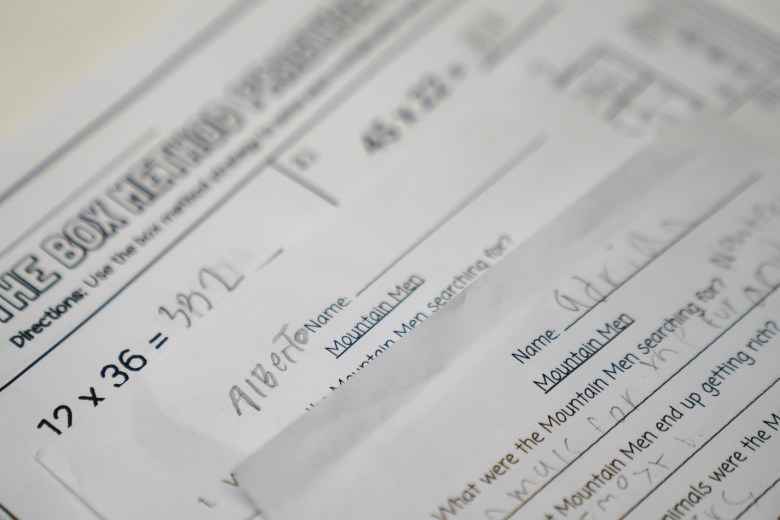
Alberto is one of approximately 2,800 migrant and refugee children who’ve arrived in Aurora, located just east of Denver, this academic year. The Denver school district — the state’s largest, with a total enrollment of about 88,000 — similarly has enrolled at least 3,700 newcomer students since last summer. In May 2023, Greg Abbott, the Republican governor of Texas, started sending immigrant families by the busloads to the Colorado capital, adding it to a destination list of other Democrat-led cities including Chicago, Philadelphia and Washington, D.C.
Aurora and Denver, like many school systems in Colorado, have long welcomed students new to the United States. In recent years, they have designated specific campuses to serve as resource hubs for migrant and refugee families, offering wraparound supports, integration services and dual-language programs. But the ongoing surge of immigrants — local educators hesitate to call it a crisis — have exposed clear signs of strain: Classrooms don’t have enough seats for students. Teachers are fatigued by large class sizes, discipline issues and new students showing up each day. And state and local leaders are increasingly resistant to helping shoulder the costs.
The city council in Aurora, for example, recently passed a resolution restricting migrants from receiving local public services, a move that opponents fear will place undocumented residents at risk if they experience a fire, medical emergency or violent crime. But when it comes to schools, requirements under the U.S. Constitution are clear: States are obligated to allow children living in the U.S. without legal documentation to access a basic education. That’s created a new dilemma for schools in communities like Aurora and Denver: The steady arrival of newcomers has all but reversed years of declining enrollment, staving off budget cuts and layoffs, but the costs associated with addressing the new arrivals’ basic needs are steep.
“It doesn’t matter what your opinion is. You have to serve these kids,” said Julie Sugarman, an associate director for K-12 education research at the nonpartisan Migration Policy Institute. “There are civil rights that support these kids, but it does come with real, significant costs.”
Related: How one district handles the trauma undocumented students bring to school
Although migration fell at the start of the pandemic in 2020, it rebounded quickly, with the number of migrants encountered along the U.S.-Mexico border by U.S. Border Patrol more than quadrupling in 2021.
In a typical year, Denver Public Schools enrolls about 500 students who’ve just moved to the country. The district so far this year has been receiving an average of 250 each week, according to Adrienne Endres, the district’s executive director of multilingual education.
“We have some less-than-ideal circumstances,” she said. “We have some very full classrooms. We hear most from teachers, ‘This is kind of overwhelming. There’s a lot more kids and they all need a lot more from me.’”
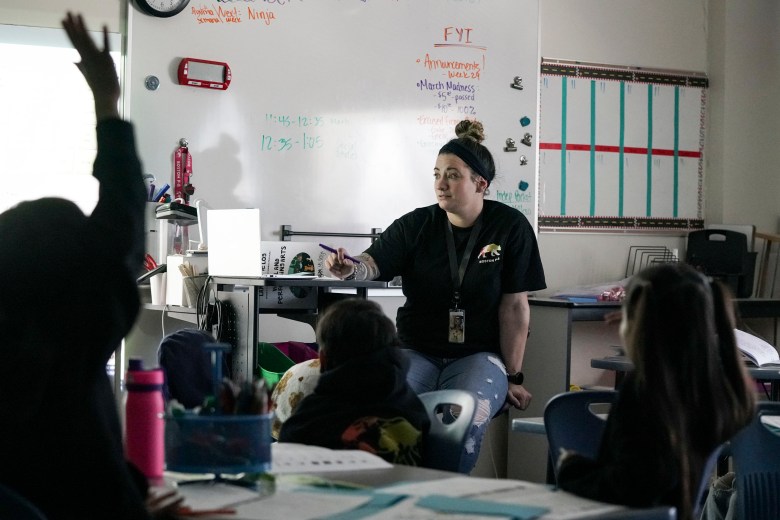
The majority of migrant families in Denver have chosen to place their kids in schools with existing bilingual programs, Endres added. But many students who have little, or any, formal experience with education find a better fit in one of the district’s newcomer centers. The city opened its first center back in 1999, in an unused gym at Denver South High School, as a magnet program for refugee children who speak neither Spanish nor English.
The district has since expanded the program to six campuses, where students learn literacy skills for one to two semesters before gradually moving into general classes.
On a recent morning at South High’s newcomer center, teacher Karen Vittetoe worked with 14 teenagers from nearly as many countries — including Burundi, El Salvador and Sudan — on how to tell time and describe a daily schedule in English.
“Marta goes to work at 9:50 in the morning. Is that 9:15 or 9:50? Do you hear the difference?” she asked as two teaching assistants walked in the classroom.
The adults together speak six different languages, allowing them to help during small group and one-on-one instruction during the 90-minute period. But that’s not nearly enough in Vittetoe’s larger second period, where 31 students speak 11 different languages.
“Can you imagine?” she said. “I don’t even have enough desks for them all.”
One of her students, 18-year-old Momena, spoke no English when she first enrolled at South High about eight months ago. Her family left Afghanistan, where the Taliban banned girls from attending school beyond the sixth grade.
“I like everything about this school — except the food,” Momena said. “They have a nice curriculum and also kind teachers.”
Like her older brother, a nurse, Momena hopes to one day work in the medical field.
“This is very important for me,” she said of getting an education in the U.S. “I want to go to college, go into nursing. I try hard every day.”
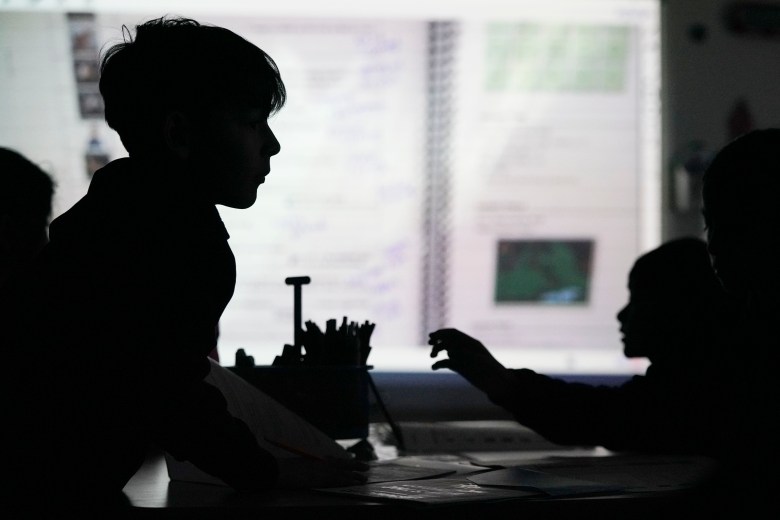
Unlike Momena, most students in Vittetoe’s classes arrived after October 1 — the date on which Colorado determines its annual funding for K-12 schools based on enrollment. Only 10 other states rely on a single count day to allocate funding to districts. And in Denver, that’s required central administrators to draw from cash reserves and other department budgets to make up for the roughly $17.5 million that the district hasn’t received in per-pupil funding despite enrolling so many migrant and refugee children since last fall.
State lawmakers in February fast-tracked a plan to provide $24 million — to be split among districts across Colorado — to ease the strain on local school budgets. Gov. Jared Polis signed the legislation in early March, but the money has yet to trickle down to local districts.
“Without action in D.C., it’s up to each state if schools get any support at all,” said Jill Koyama, vice dean of educational leadership and innovation at Arizona State University’s teachers college.
Related: Convincing parents to send their children to a San Francisco public school
At Boston P-8 School in Aurora, the first few weeks made for a rough transition for Alberto.
He failed a vision screening test and received a voucher for an eye exam, but passed it. Teachers eventually determined he had such little schooling that he simply couldn’t identify letters to follow along in class. The school nurse also learned about trauma Alberto had experienced back home and on his journey to this country. School staff would have placed him with a therapist on campus, but no one on the mental health support team speaks Spanish. Many newcomers, including Alberto, have been referred to an online therapy service.
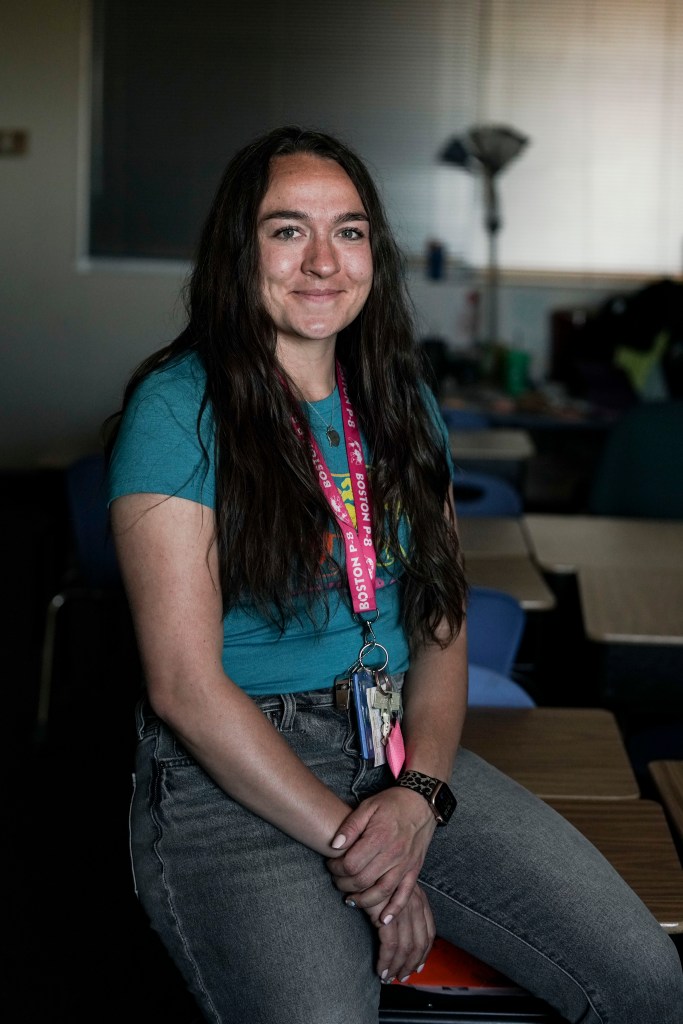
The school, however, had recently hired Danielle Pukansky, one of two English language development teachers who, in a tiny and cramped room, lead daily 45-minute classes for multilingual learners like Alberto.
“The trauma showed when he first got here,” Pukansky recalled, noting he had been aggressive toward other students. “How to re-regulate when these big emotions come up in such a little body, that is part of my background — and thank goodness.”
She said many of her students come to school worried about deportation, insecure housing and simply being misunderstood. “I try to help the kids not feel that fear,” Pukansky said.
Boston P-8 is one of six community schools in Aurora that provide intensive support services — such as medical care, food, clothing and adult education and language classes — to help stabilize families so kids can focus on academics in class. It’s similar to the community hub model that Denver Public Schools operates at six campuses. And as of 2022, the state has allowed low-performing schools to convert to the model as part of a school’s turnaround plan.
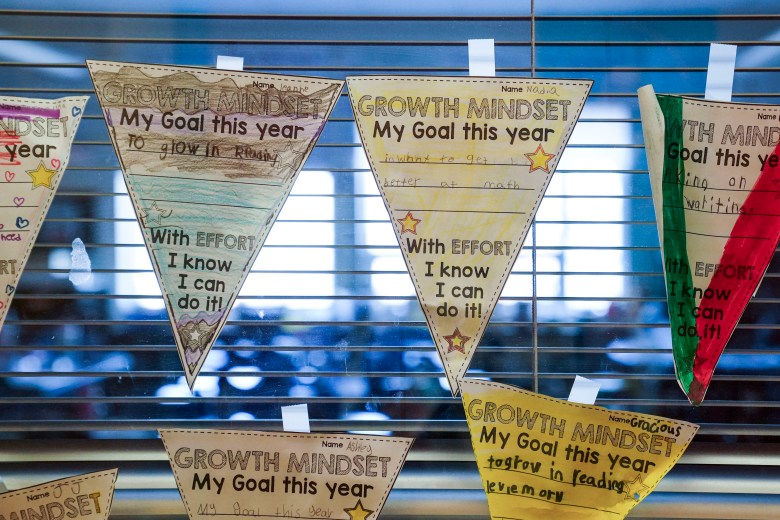
Late on a Wednesday afternoon, Yuliver sat in Boston P-8’s community room with her head in her hands. A worsening toothache had kept her awake for days, and made it hard to look for work or an immigration lawyer who might help her. After making a couple calls, a staff member booked her a tooth extraction, free of charge, at a nearby dental clinic.
“This is the only place I feel supported,” Yuliver said. “Clothes, Wi-Fi, food, shoes — they help with everything.”
Upstairs, in an afterschool science program, Alberto was learning about the education required to become a dentist.
Related: PROOF POINTS: Schools’ mission shifted during the pandemic with healthcare, shelter and adult ed
In Aurora and Denver, which both faced enrollment declines during the pandemic, the influx of migrant students this year presents an ironic silver lining: By contrast, enrollment statewide has continued to fall for two straight years — with the largest decreases in pre-kindergarten through first grade — prompting school closures, budget cuts and potential layoffs.
In the Denver area, the surge of students from other countries has more than made up the difference.
So far this year, Ellis Elementary in southeast Denver has absorbed 60 more students than initially expected. Several classes are packed with 35 students — the maximum allowed under the district’s contract with teachers. A week before even more students arrived in late February, Principal Jamie Roybal hired two novice educators. They had only a couple days to convert a teachers lounge and music room into their first classrooms.
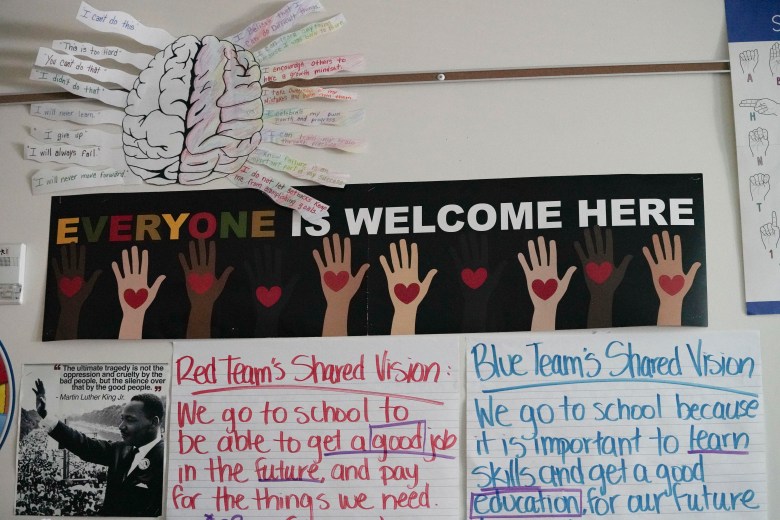
Roybal said that on hard days many of her staff members contemplate leaving the profession. “We’re swimming in the deep end,” she said, looking into a classroom. “That’s a first-grade teacher with 35 newcomers. That’s a lot. When she goes home, she’s exhausted.”
By winter break, Hamilton Middle School in Denver had already absorbed 100 additional students over its projected enrollment. Priscilla Rahn, a Republican candidate for the Douglas County commission who teaches band and orchestra at Hamilton, said it’s been a joy to welcome so many new musicians who have never had an instrument of their own.
Still, Rahn wondered whether the community’s generosity had been exhausted.
“We’re cutting city services,” she said, referring to the mayor’s budget. “As a teacher, we can’t ask if you’re legal. It doesn’t matter. I teach all kids. But as a city, we’re pretty much at capacity. We cannot take any more families, because we don’t have the money or the space.”
At Centro de los Trabajadores, a local labor rights group, executive director Mayra Juárez-Denis has for months fielded calls from recent migrants trying to secure legal work or file complaints about employers who exploited them. Lately, her phone started ringing with rants from teachers overwhelmed with the current crisis.
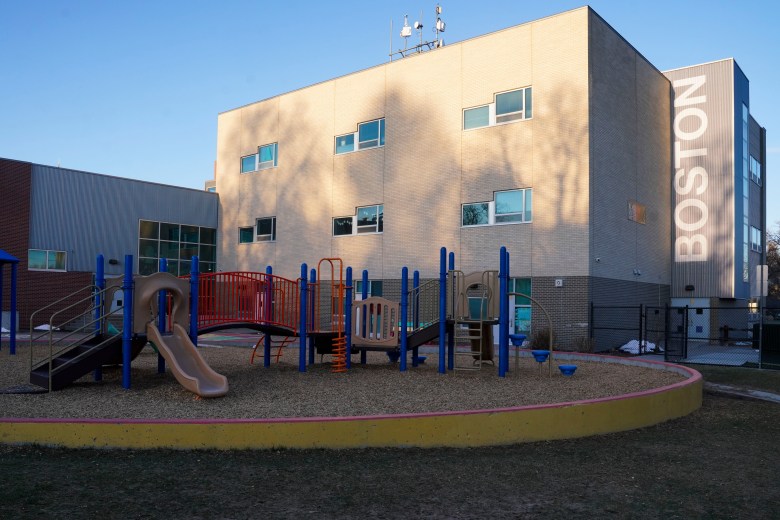
The organization has tried to partner with Denver Public Schools, mostly to host a worker center or hiring fair for hourly jobs. Scott Pribble, a spokesman for the district, said it has looked for parents with legal documentation to work in cafeterias or get licensed to drive a bus.
“We want to help the district with labor integration for parents,” Juárez-Denis said. “They need not just immigrant teachers who serve Spanish speakers, but every staff position can use someone who is already part of the immigrant community.”
Related: School support staffers stuck earning poverty level wages
At some campuses, Denver principals have been able to identify and recruit migrant parents who used to teach in their home countries, but for out-of-country teachers, the checklist of requirements they must meet for eligibility to work in the state long. At Ellis Elementary, for example, a classroom aide from Venezuela finally got her teaching license approved in Colorado — three years after she first applied to teach in the U.S.
The latest federal bipartisan immigration reform proposal, which collapsed in Congress in February, would have expedited access to work authorization for asylum seekers, potentially allowing people like Yuliver to begin employment before the current six-month waiting period.
Without a job, Yuliver has struggled to afford an apartment — even one without hot water or central heating — for her and Alberto. She tried to sell household goods to shoppers on the street and would like to work in a beauty shop, doing nails and hair. Already, though, Yuliver has considered making the trek back to Venezuela if she can’t find employment.
“I wish for him to keep studying,” she said of Alberto. “He’s intelligent. He just wants to learn everything.”
Alberto, meanwhile, said he misses his friends and swimming at the beach back home. But here he’s learning to ride a bike — provided by the community school program — and has already made five new friends at Boston P-8.
During a sunny but chilly recess, Alberto drew a heart with wood chips on the ground in his school’s playground. He placed a stray feather in the middle, and said it was for those friends he’d made at his first-ever school.
*Correction: The photo credits in this story have been updated with the correct name for the photographer, Rebecca Slezak.
This story about Denver migrants was produced by The Hechinger Report, a nonprofit, independent news organization focused on inequality and innovation in education. Sign up for the Hechinger newsletter.



